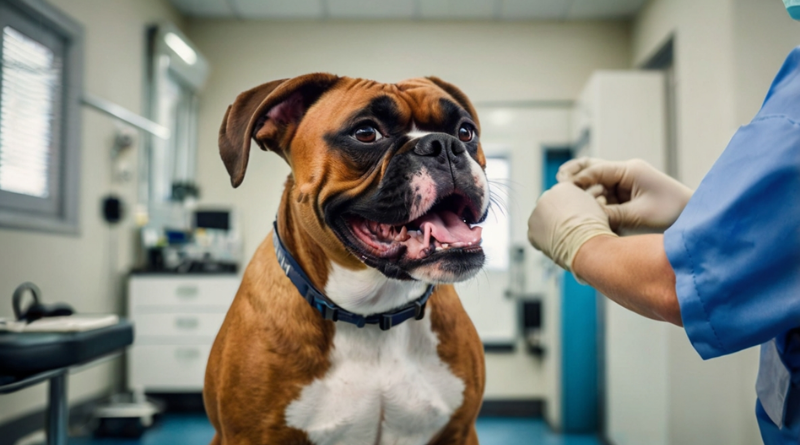Common skin issues in dogs can significantly affect their comfort and overall health. Identifying and addressing these issues promptly is essential for maintaining your dog’s well-being. Skin problems can range from mild irritations to more severe conditions requiring medical intervention. This blog explores common skin problems in dogs, their causes, symptoms, and how to manage them effectively to ensure your pet’s long-term health and happiness.
Common Skin Issues in Dogs: Allergies
Allergies are a primary contributor to skin problems in dogs. Common allergens include pollen, dust mites, mold, and certain foods. Dogs with allergies often exhibit symptoms such as itching, redness, excessive scratching, and licking. In some cases, you may also notice hair loss or skin infections due to persistent irritation. Regular veterinary check-ups, allergy testing, and hypoallergenic diets can help manage these allergies effectively. For environmental allergens, frequent cleaning and air purifiers can minimize exposure.
Parasites: Fleas, Ticks, and Mites
Parasites like fleas, ticks, and mites are another common cause of skin irritation in dogs. Flea infestations lead to intense itching, and in severe cases, they can cause flea allergy dermatitis, a condition where dogs have an allergic reaction to flea saliva. Ticks can transmit diseases like Lyme disease, while mites can cause mange, characterized by hair loss, scaly skin, and severe itching. Routine use of veterinarian-approved preventive treatments, such as topical solutions, oral medications, or collars, is crucial to protecting your dog from these pests. Regular grooming and inspecting your dog’s coat for parasites after outdoor activities also help prevent infestations.
Infections: Bacterial and Fungal
Bacterial and fungal infections often result from untreated skin injuries or underlying conditions. Symptoms include sores, foul odors, flaky skin, and sometimes pus-filled lesions. Bacterial infections like pyoderma can develop in dogs with weakened immune systems or underlying allergies. Yeast infections, particularly in moist areas like the ears, paws, or folds of skin, are also common and cause discomfort. Prompt diagnosis and treatment with appropriate antibiotics or antifungal medications can resolve these infections effectively. Ensuring your dog’s environment is clean and dry can help prevent recurrences.
Hot Spots: Acute Moist Dermatitis
Hot spots, or acute moist dermatitis, are red, inflamed patches of skin that can appear suddenly. They are often caused by excessive licking, scratching, or biting, which introduces bacteria into the skin. These areas can be painful and prone to infection. Keeping the affected area clean and using prescribed topical treatments, such as antibacterial sprays or creams, can help heal hot spots quickly. Preventing your dog from licking the area, using an Elizabethan collar if necessary, is also critical during the healing process.
Dry Skin and Environmental Factors
Dry skin can make your dog uncomfortable, causing itching, flaking, and even cracking in severe cases. Environmental factors such as low humidity, cold weather, or exposure to harsh shampoos can exacerbate dry skin. Dogs with underlying health conditions, such as hypothyroidism, may also experience chronic dry skin. Regular grooming, using moisturizing shampoos and conditioners designed for dogs, and providing omega-3 fatty acid supplements in their diet can alleviate these symptoms. If dryness persists, consult your veterinarian for further evaluation and treatment.
Other Common Skin Conditions
- Ringworm: A fungal infection that causes circular, hairless lesions on the skin. It is highly contagious but treatable with antifungal medications.
- Seborrhea: A condition where the skin becomes greasy or excessively flaky due to overproduction of sebum. This can be managed with medicated shampoos and addressing underlying causes.
- Skin Tumors: While not always malignant, skin growths should always be evaluated by a veterinarian to rule out cancer.
Preventive Measures for Healthy Skin
- Balanced Diet: Ensure your dog gets the necessary nutrients for healthy skin and a shiny coat. Foods rich in omega-3 and omega-6 fatty acids are particularly beneficial.
- Regular Grooming: Brushing your dog’s coat helps distribute natural oils, remove debris, and check for signs of skin issues.
- Parasite Control: Use preventive measures, such as flea and tick treatments, to protect against infestations.
- Veterinary Check-ups: Regular visits can catch and address skin issues early before they escalate.
- Hydration: Keeping your dog well-hydrated contributes to skin elasticity and overall health.
By understanding the common skin issues in dogs and taking proactive steps to address them, you can ensure your furry friend stays comfortable, happy, and healthy for years to come. Always consult a veterinarian for any persistent or severe skin problems.
Sources:
American Kennel Club, Veterinary Dermatology Articles, RSPCA

